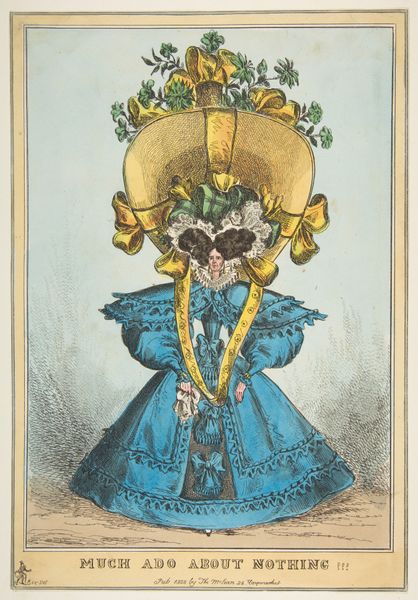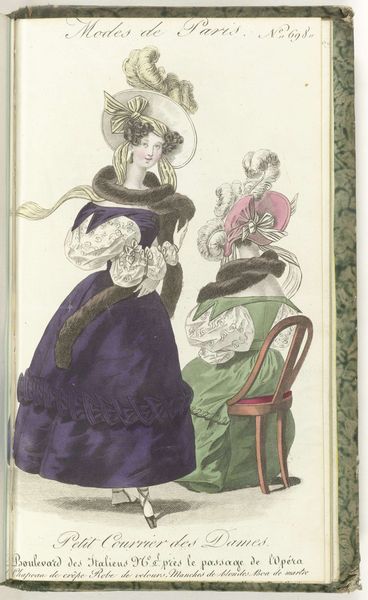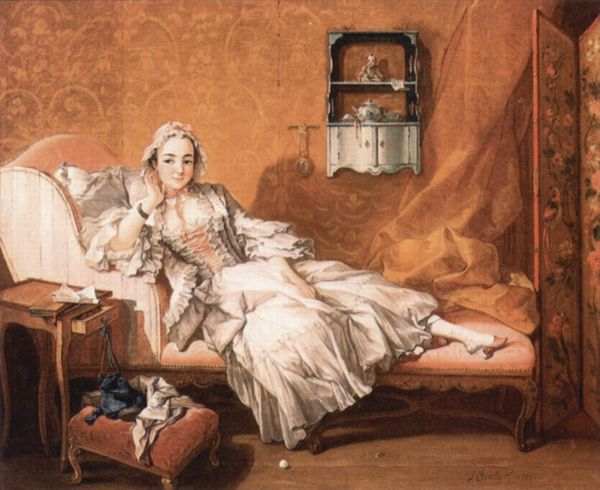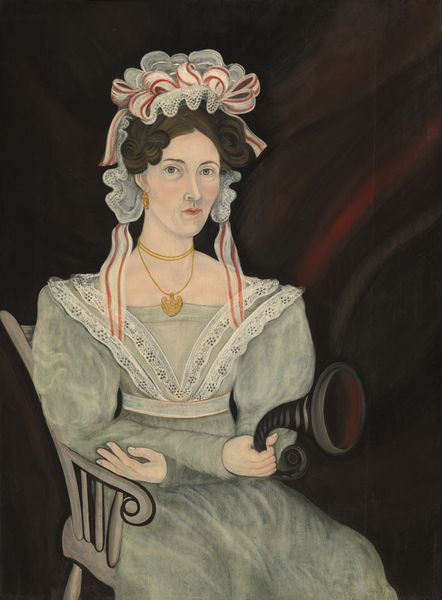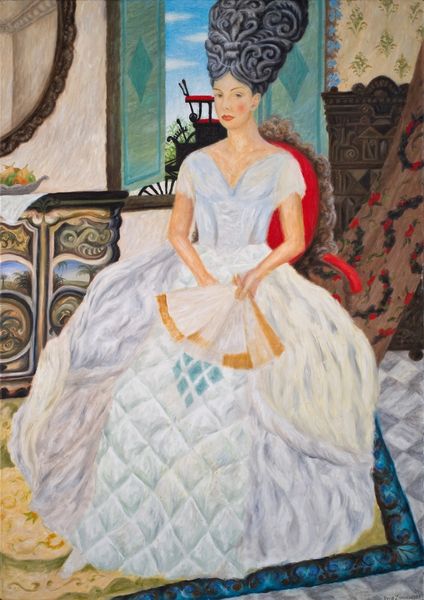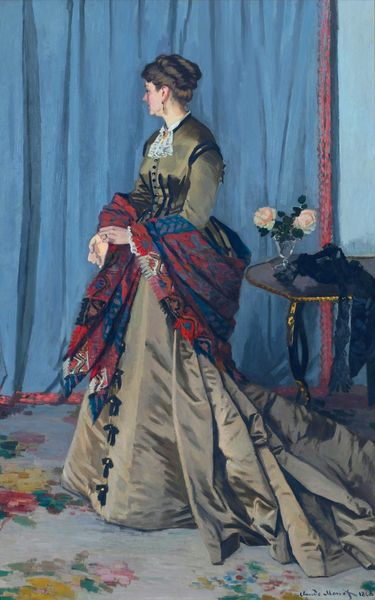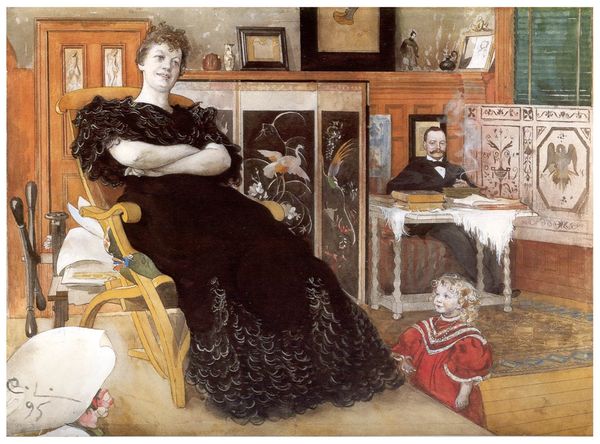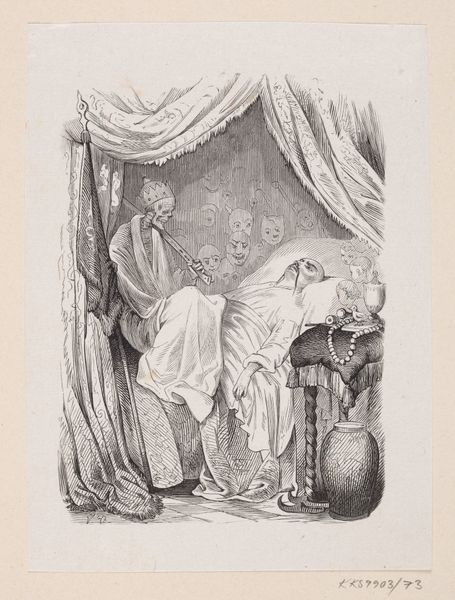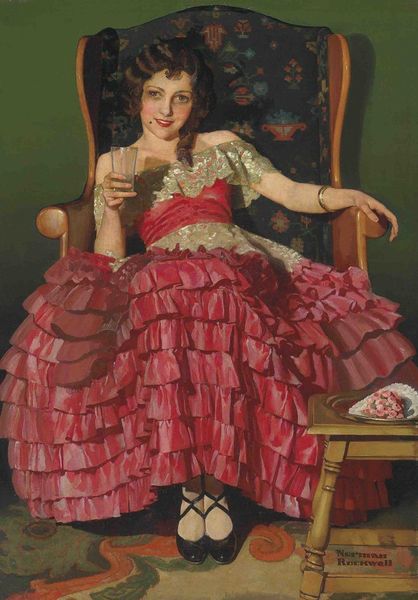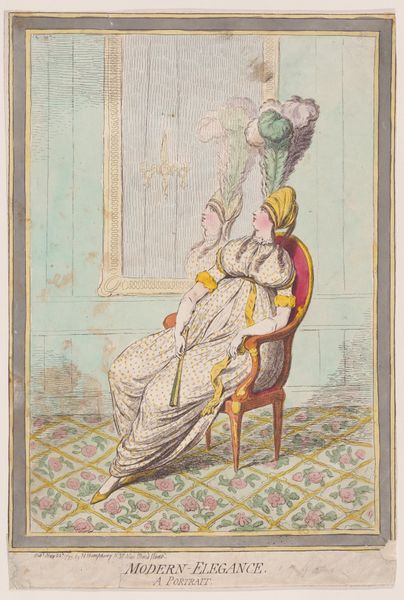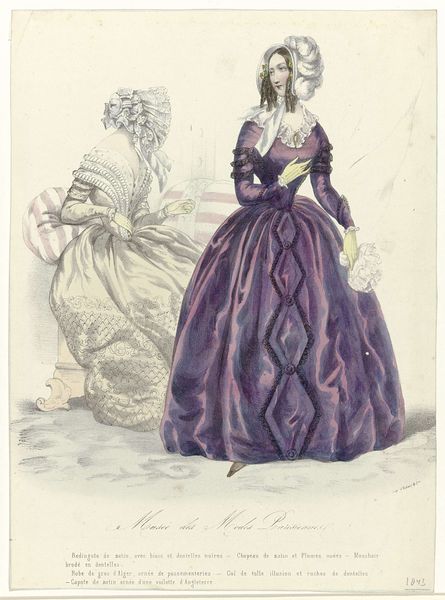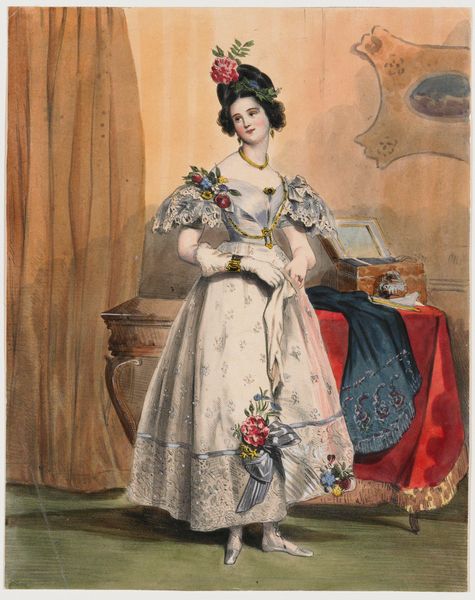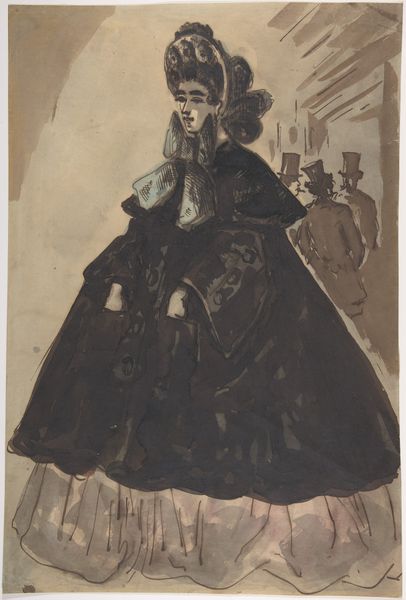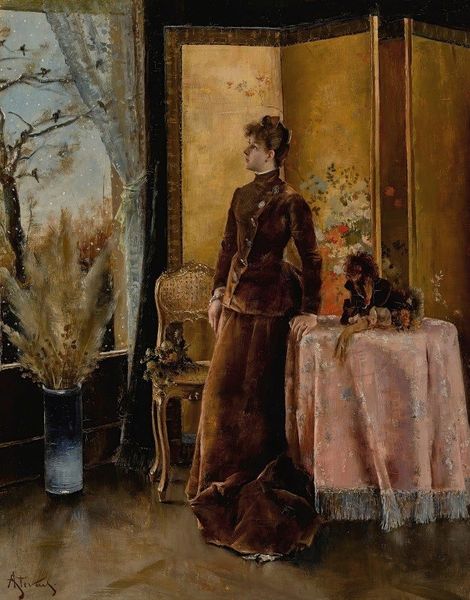
painting, oil-paint
#
portrait
#
fantasy art
#
painting
#
oil-paint
#
fantasy-art
#
naïve-art
#
naive art
#
portrait art
#
modernism
Copyright: Philip Evergood,Fair Use
Editor: This is "A Cup of Tea," an oil painting by Philip Evergood, created in 1946. The subject matter, with the regal woman and strange dog, has an element of portraiture, but the colors and rendering seem surreal. How would you interpret this piece, focusing on the formal elements? Curator: Let's examine how Evergood constructs this image. The composition is decidedly frontal, emphasizing a flattened picture plane. Notice the vibrant red background—it clashes, quite deliberately, with the other chromatic choices, preventing any illusion of deep space. Editor: The background does seem purposefully flat. What's the effect? Curator: The artist deploys a restricted palette to create spatial tension and imbue each hue with greater emphasis. Take the red, which not only shapes the background but also frames the figure via drapery. Red creates a vibration and draws the eye throughout. Now, look at how line functions. Notice the contrast between the rigid verticality of the potted plant against the swirling curves in the backdrop. Editor: So you are describing tension, through the push and pull between the formal qualities, and not what the woman *represents*? Curator: Precisely. This approach considers art on its own terms. Focus instead on *how* the object creates meaning. What do you make of the exaggerated features of the dog, poised as an element, on a bone? Editor: Its almost humorous presence, especially when paired with the very serious older woman, makes me think of other artists’ incorporation of seemingly trivial domestic details into significant portraits. I might want to learn more. Curator: Yes, and this might benefit from comparison to the flatness and decorative patterning deployed by the Nabis in their domestic interiors. Ultimately, this artwork asks us to attend closely to how its formal elements cohere, and through this structure, it acquires a particular expressive power.
Comments
No comments
Be the first to comment and join the conversation on the ultimate creative platform.
